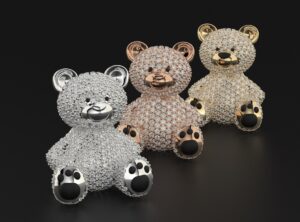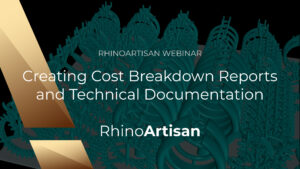If you are thinking of creating handmade jewelry, one of the essential points is the material for your jewelry. So what are you going to make it out of?
The jewelry materials you use are the fundamental part of the creation process and will define your final work and its cost.
Therefore, you should look for resistant and durable jewelry materials while allowing you to work your creativity and freedom of expression when making different types of jewelry.
And, of course, to make everything easier and that creativity flow freely, I recommend you to work with an expert 3D jewelry design program. You will quickly notice the difference.
What are the most commonly used jewelry-making materials?
Whatever they are, the jewelry materials you use must be safe for users; that is, they must not contain elements that are toxic or allergic to people.
There are many materials and precious metals that you can use to create your jewelry, from natural materials such as wood and stone to synthetic materials such as plastic and stainless steel.
Each material has its characteristics and advantages, so it is essential to know them to choose the right one for each project.
Precious metals and other materials for jewelry making
The best jewelry pieces are made from gold, silver, platinum, stainless steel, titanium, copper, bronze, and some precious metals such as palladium and rhodium.
These materials are the most durable and corrosion-resistant, giving jewelry pieces superior shine and quality.
Of course, some of these jewelry materials can also be combined with precious stones such as diamonds, ruby, sapphire, and/or emeralds.
In contrast, other jewelry is made from cheaper materials such as acrylic, glass, wood, and plastic.
One of the most popular materials for jewelry making is gold. Gold is a very strong and durable precious metal that does not rust or wear out over time.
In addition, gold is a noble metal, which means it contains no impurities and is completely hypoallergenic, making it ideal for people with sensitive skin.
Another trendy precious metal ideal for creating jewelry is silver, a very versatile metal that can be used to create a wide variety of jewelry pieces.
Like gold, silver is hypoallergenic and resistant to oxidation, making it a good choice to avoid allergies in people with sensitive skin.
An alternative to precious metals for creating jewelry is stainless steel. This is a resistant and durable material that does not rust or wear out over time and is also a hypoallergenic metal.
Finally, we should also mention natural materials, such as wood and stone, which, although they are not precious metals, add a unique touch to all your jewelry pieces.
Wood and stone are natural materials that are resistant and do not contain elements that are toxic to the body.
As you can see, there is a great diversity of materials to create the jewelry you can use in your creations.
- Gold, silver, and stainless steel are popular materials for manufacturing jewelry of all kinds.
- Wood and stone are perfect natural materials to give a differential nuance to your jewelry pieces.
Which one do you choose?….











